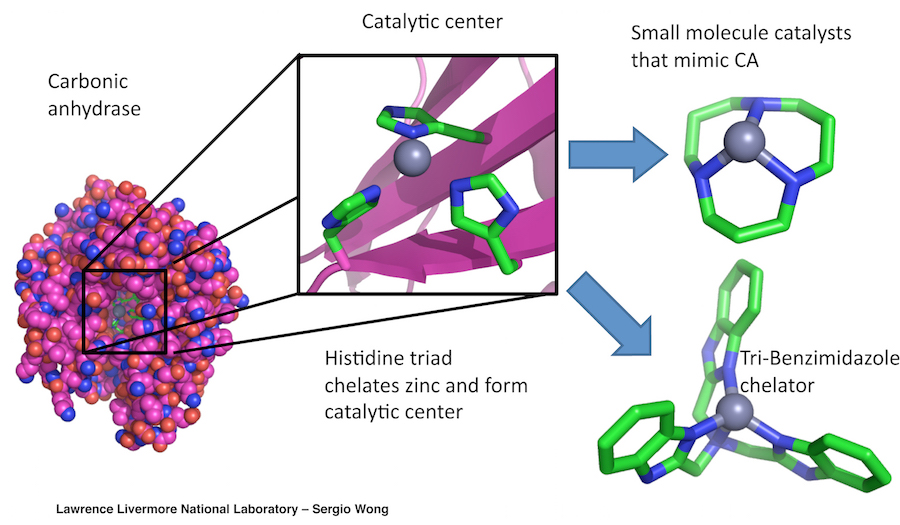Monday, 01/12/2025 | 08:16 GMT+7
A CCEMC-funded project by Quebec-based CO2 Solutions that focuses on carbon capture for oil sands production is complete. The project exceeded its goals and the company is moving forward with a field pilot. Upon successful completion of the pilot, CO2 Solutions sees opportunities to implement the technology commercially for carbon capture projects, such as in Enhanced Oil Recovery (EOR).
CO2 Solutions is using a “super enzyme” in their process called carbonic anhydrase — the same enzyme the human respiratory system uses. The enzyme has been bioengineered by CO2 Solutions to function in the harsher conditions of a carbon capture process.
“While carbon capture technologies are in use around the world today, the costs of carbon capture are still too high to make the economics attractive,” said CCEMC Managing Director Kirk Andries. “The CCEMC is supporting projects like this one by CO2 Solutions because we know it’s critical to reduce the cost of carbon capture in order to see broader adoption.”
Carbon capture technologies are important because the bulk of the world’s energy demand will be met by fossil fuels for decades to come. Many organizations, including the UN Intergovernmental Panel on Climate Change and the International Energy Agency have identified that carbon capture technologies will play a critical role in limiting increases in global surface temperature.

Based on the success of the project, CO2 Solutions plans to roll out a number of EOR projects in Alberta which they forecast to result in cumulative reductions of more than 3.4 megatonnes by the end of 2024.
“The pilot project represents the final stage in the scaling up of our technology prior to CO2 Solutions entering the commercial phase of its development,” stated Evan Price, President and CEO of CO2 Solutions. “We see considerable potential in various sectors for the commercial reuse of CO2, including in EOR. Despite falling oil prices, oil companies continue to produce, and we believe there is a clear opportunity to market our low-cost technology to operators with existing EOR infrastructure.”
Cost effective carbon capture
The CO2 Solutions project the CCEMC funded demonstrated that the company’s patented enzymatic CO2 capture and recovery technology has the ability to capture approximately 90 per cent of the CO2 from flue gases more cost effectively than conventional amine based processes. The capture efficiency and the improvement in operational costs results in improved capture economics for the supply of industrial volumes of CO2 for beneficial use.
Notably, compared to a conventional amine process, their enzymatic carbon capture technology provided an 88 per cent reduction in energy consumption by using low-grade, nil value heat, and 31 per cent overall savings in CO2 capture costs. The technology could provide a cost-effective solution for CO2 capture from the oil sands and other large sources of emissions — in Alberta and beyond.
Collaboration key to success
Projects that advance innovative new technologies typically involve collaboration between many different organizations. That’s true for this technology as well.
CO2 Solutions began developing its enzyme-based carbon capture technology in 1997. Their initial work focused on CO2 removal from ambient air in submarines and was funded in part by the Canadian Department of National Defence.
Sustainable Development Technology Canada (SDTC) also funded early work by
CO2 Solutions, specifically on removal of pollutant gases from Quebec City’s incinerator and the mineralization of CO2 for use in paper coating.
In 2009 CO2 Solutions entered into a Joint Development Agreement with Codexis, Inc., a leader in developing and manufacturing enzymes for industrial processes. This led to the creation of more stable carbonic anhydrase (CA) enzymes. The work was supported by a US $4.7 million grant from the U.S. Department of Energy’s Advanced Research Project Agency for Energy (ARPA-E).
The CCEMC committed $500,000 in funding in 2012 to help the company optimize its technology to capture carbon from natural gas combustion and prepare it for pilot testing in the oil industry. In 2013, they secured $4.97 million from the Government of Canada’s ecoENERGY Innovation Initiative to support the project.
In 2014 CO2 Solutions further advanced its technology offering with the development of a proprietary, high-performance carbonic anhydrase enzyme named 1T1. Developed internally with the financial assistance of the Government of Canada’s Industrial Research Assistance Program (IRAP), 1T1 has demonstrated longevity significantly surpassing that of the best third-party enzymes used by CO2 Solutions to date. In this regard, 1T1 both further lowers the cost of the carbon capture process, and provides CO2 Solutions with autonomy in its supply chain decisions when offering a complete technology solution to emitters.
In April 2015, the success of the technology continued with the announcement by CO2 Solutions that based on testing with the world renowned Energy & Environmental Research Center (EERC), it had beaten the U.S. Department of Energy’s cost target for carbon capture for the year 2025 ten years ahead of schedule. On the basis of that important accomplishment, CO2 Solutions also announced plans to begin its 10 tonne-CO2/day field pilot earlier than anticipated in the Montreal area in May 2015.
Truong Duy








 Energy efficiency and sustainable development in textile sector
Energy efficiency and sustainable development in textile sector
 Hoa Phat saves nearly 3,500 billion dong thanks to self-generated electricity
Hoa Phat saves nearly 3,500 billion dong thanks to self-generated electricity
 Enhancing capacity to develop and implement energy efficiency policies at local level
Enhancing capacity to develop and implement energy efficiency policies at local level
 Stanley Vietnam: Targeting a 4% Reduction in Annual Energy Consumption Intensity
Stanley Vietnam: Targeting a 4% Reduction in Annual Energy Consumption Intensity
 Nghe An Industrial Enterprises Proactively Implement Energy-Saving Measures
Nghe An Industrial Enterprises Proactively Implement Energy-Saving Measures
 WEBINAR 1 - Scaling Up Energy Efficiency in Vietnam
WEBINAR 1 - Scaling Up Energy Efficiency in Vietnam
 Bosch Vietnam Plant Benefits from Investment in Energy Efficiency
Bosch Vietnam Plant Benefits from Investment in Energy Efficiency